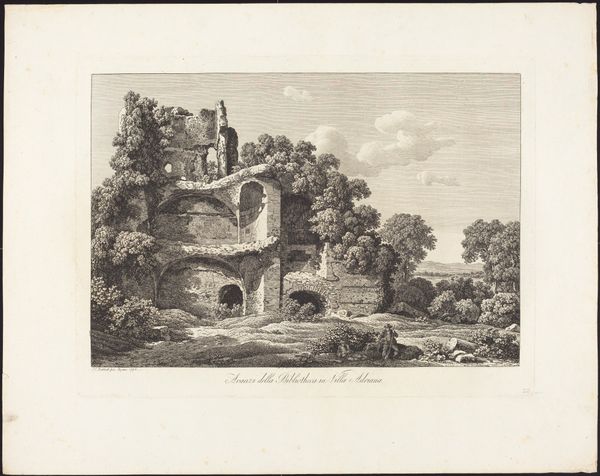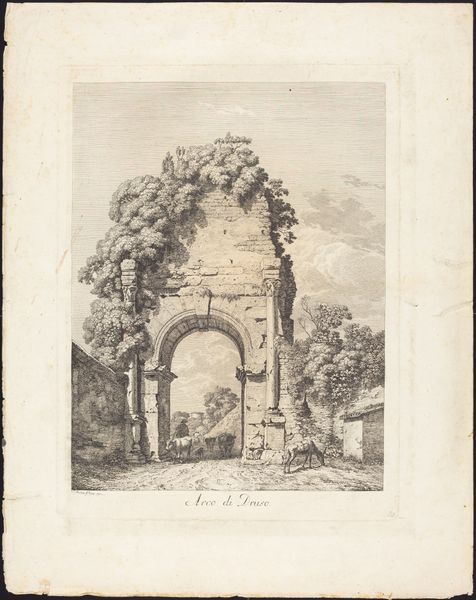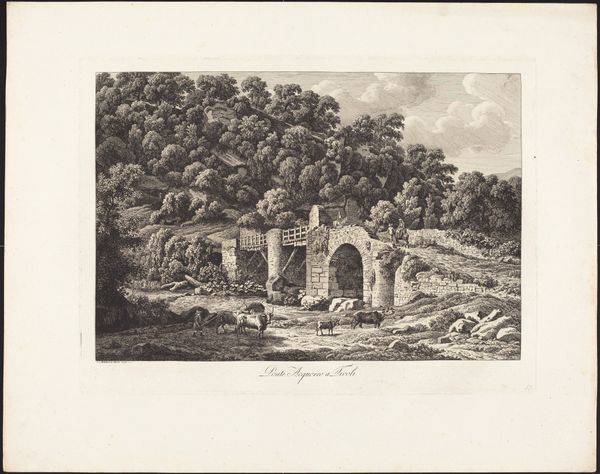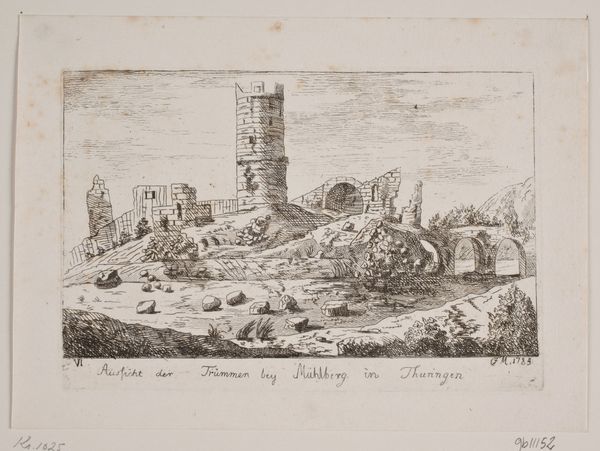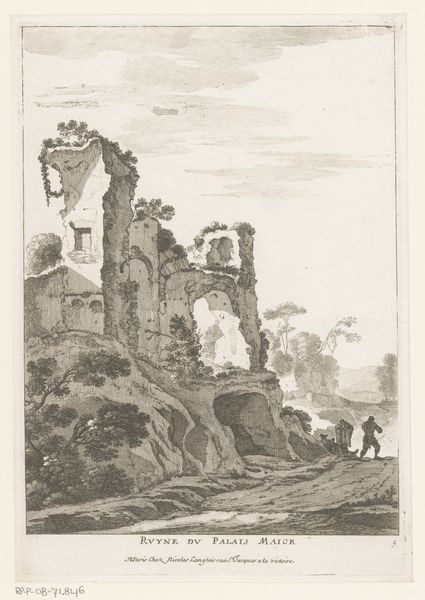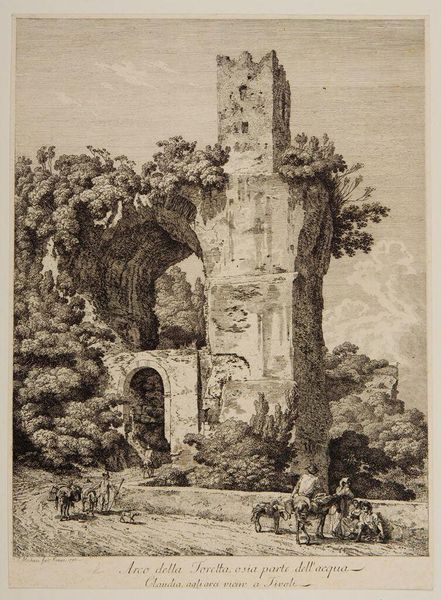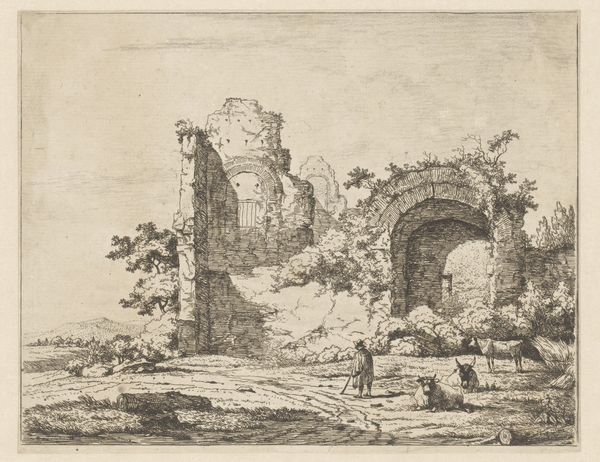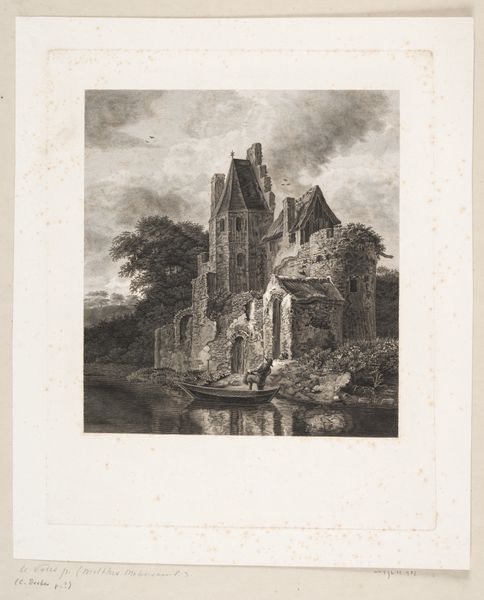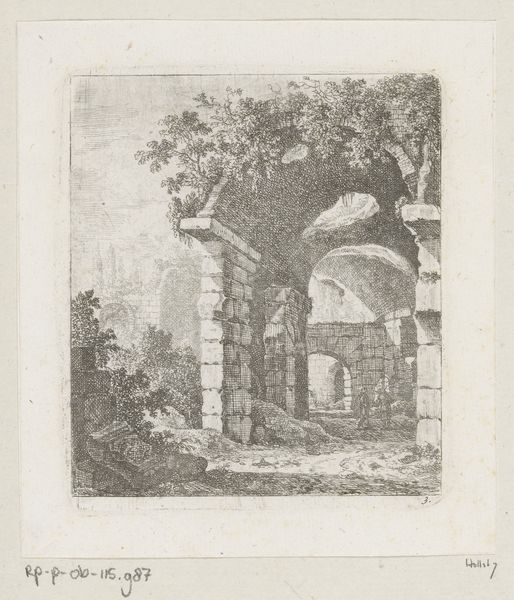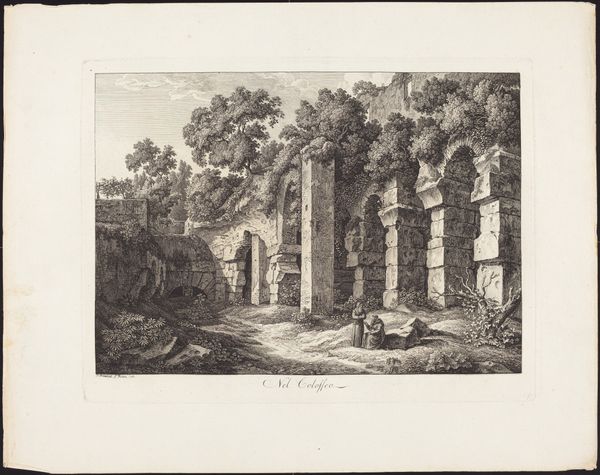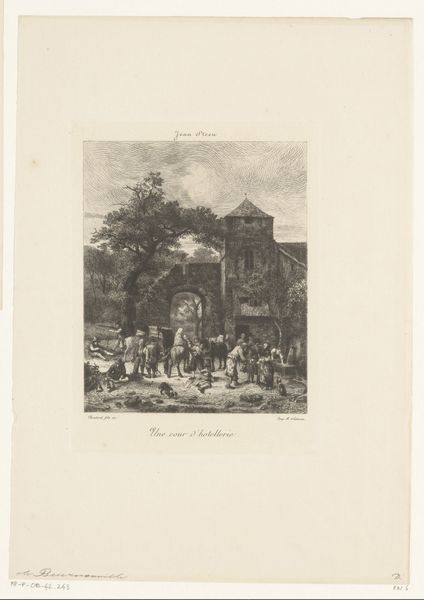
Arco della Toretta o sia parte dell'acqua Claudia, agli Arci vicino a Tivoli 1793
0:00
0:00
drawing, print, ink
#
drawing
#
neoclacissism
#
ink drawing
# print
#
landscape
#
ink
Dimensions: plate: 37.2 x 28 cm (14 5/8 x 11 in.) sheet: 49.2 x 39.2 cm (19 3/8 x 15 7/16 in.)
Copyright: National Gallery of Art: CC0 1.0
Curator: Ah, "Arco della Toretta o sia parte dell'acqua Claudia, agli Arci vicino a Tivoli" by Jacob Wilhelm Mechau, created around 1793. It's an ink drawing, a print of sorts. There's such a… wistful air about it. Editor: Wistful is spot on! The ruins looming, almost melting into the landscape, give off a sense of melancholic beauty, like a memory slowly fading. Curator: Mechau, typical of his time, was enthralled by the romantic allure of classical ruins. Tivoli, near Rome, was a hotspot for these artists drawn to antiquity. You see that overgrown aqueduct turned…folly? It really speaks to how the Enlightenment was reimagining its relationship with the classical world, or, dare I say, controlling it. Editor: Controlling, maybe, but nature has taken over in a dramatic, anarchic way. All that detail in the foliage and the wear of the stone! It contrasts nicely with the rigid geometry. It's a bit cheeky, like the natural world is gently mocking human ambition. Curator: Right! And think about how prints like this were circulated. These images helped shape public opinion, fostering both reverence for and, perhaps, a sense of superiority over the past. Art being at the forefront of popularizing architecture of the classical times Editor: Good point. So it wasn't just about aesthetic appreciation but also about cultivating a particular cultural identity in its modern socio-political landscape. Curator: Precisely. It is like art is subtly prompting people to reassess our understanding of architectural ruins within a larger dialogue of cultural continuity and, sometimes, rupture. Editor: Well, for me, the print creates a beautiful conversation between decay and endurance, ambition and humility, nature and our need to tame it. Always gives me something to think about, in the most unexpectedly moving ways. Curator: Agreed! It definitely captures a historical moment poised between admiring the old and forging the new. Fascinating.
Comments
No comments
Be the first to comment and join the conversation on the ultimate creative platform.
